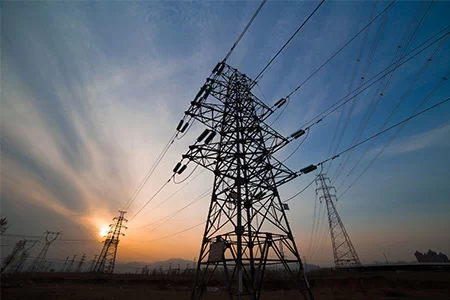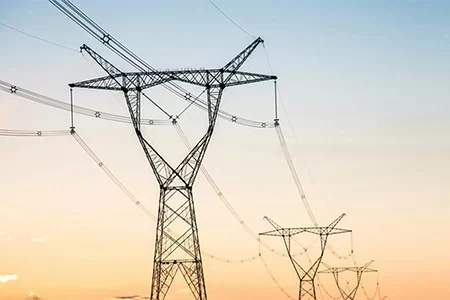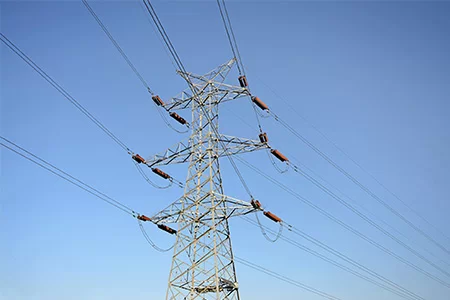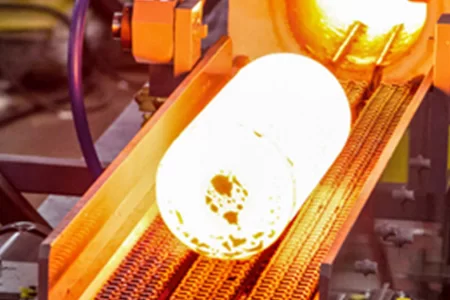HULK Metal will continuously update the dynamics of the metal products industry, to support your decision-making.

Hulk Metal News
Share what's new
-
Home>
-
Blog>
-
Technology>
Wire Rope Grip material comparison: 35CrMo alloy steel vs aluminum alloy

In the production of Wire Rope Grip, the choice of material is crucial, as it directly affects the performance, durability, and applicable scenarios of the product. Two common materials are 35CrMo alloy steel and aluminum alloy, both of which have advantages and disadvantages in terms of structural strength, corrosion resistance, service life, weight, etc. This article will analyze the performance of these two materials in detail and compare their advantages and disadvantages.
Definition
Wire Rope Grip is a device used to secure the ends of wire ropes together, commonly found in construction, lifting, and marine applications. It ensures the safety of the entire system by clamping the surface of the wire rope to prevent the rope from loosening or slipping. The choice of Wire Rope Grip material directly affects its performance. 35CrMo alloy steel and aluminum alloy are the two main options, the former is known for its strength and toughness, and the latter is favored for its lightness and corrosion resistance.
Material Comparison
35CrMo alloy steel
35CrMo alloy steel is a medium carbon alloy steel that is often used to manufacture mechanical parts with high strength, high toughness and wear resistance. Its composition contains chromium (Cr) and molybdenum (Mo), two elements that can significantly improve the strength and high-temperature resistance of steel.
Advantages of alloy steel
High strength and toughness
35CrMo alloy steel has extremely high tensile strength and impact toughness due to its high carbon content and added chromium and molybdenum elements. It can withstand large loads and severe impact forces, making it an ideal choice for high-load, high-stress situations, especially in large-scale hoisting and heavy machinery and equipment.
High-temperature resistance
Due to the content of molybdenum, 35CrMo alloy steel has strong high-temperature resistance and is suitable for applications in high-temperature environments. For example, in high-temperature industrial environments such as metallurgy and petrochemical industries, it can maintain good mechanical properties and structural integrity.
Wear resistance
35CrMo steel has high surface hardness and excellent wear resistance. After heat treatment, a high-hardness protective layer is formed on its surface, which can effectively resist friction and wear during use and extend its service life.
good weldability
Although alloy steel has high strength, its weldability is relatively good. Through appropriate welding processes, 35CrMo alloy steel can be seamlessly connected with other steel materials or components to ensure the integrity and solidity of the structure.
Ductility and workability
Although alloy steel has higher hardness and strength, 35CrMo alloy steel still has certain ductility and processability through appropriate heat treatment processes. This enables complex molding processes to be performed during the manufacturing process to meet the needs of different sizes and shapes.
Disadvantages of alloy steel
heavier
The density of 35CrMo alloy steel is relatively high, about 7.85g/cm³, which makes it less advantageous in terms of weight. This means that in some applications that require lightweight design, the weight of alloy steel can become a limiting factor, especially in areas such as aviation and navigation, where weight is critical to fuel efficiency or equipment mobility.
Poor corrosion resistance
Although 35CrMo alloy steel has superior mechanical properties, its corrosion resistance is weak, especially in salt spray, seawater, or acid-base environments, and is prone to rust. Therefore, when using this material, additional protective measures, such as galvanizing, painting or other anti-corrosion treatments, are usually required to extend its service life in corrosive environments.
higher cost
The production cost of alloy steel is relatively high because it requires complex smelting and processing processes, as well as additional steps such as quenching and tempering. This makes it perhaps not the best choice for some projects with a tight budget.
High heat treatment requirements
35CrMo alloy steel usually requires a strict heat treatment process before use to improve its performance. If the heat treatment process is improper, it may lead to a decrease in material performance and even cracks, brittleness and other problems.
Aluminum alloy
Aluminum alloy is a lightweight material formed from aluminum and other metal elements (such as copper, zinc, magnesium, etc.) through an alloying process. It is light in weight, has good corrosion resistance, and has good thermal and electrical conductivity. It is widely used in aviation, construction, automobile, and marine fields.
Advantages of aluminum alloy
Lightweight
The density of aluminum alloy is about 2.7g/cm³, which is about three times lighter than alloy steel. Therefore, the aluminum alloy Wire Rope Grip is an ideal choice for applications that require lightweight, such as aerospace, automotive, and aerial work equipment. The lighter weight not only reduces the overall weight of the equipment but also improves energy efficiency, especially in terms of transportation and operation.
Excellent corrosion resistance
Aluminum alloy has a natural protective layer of aluminum oxide, which can effectively prevent corrosion in moisture, salt spray, and other corrosive environments. As a result, aluminum alloy Wire Rope Grip performs superiorly in corrosive environments such as marine, coastal construction or chemical plants, reducing the need for regular maintenance and replacement.
Strong processability
Aluminum alloy has good machinability and is easy to make parts with complex shapes through various processing techniques (such as forging, casting, extrusion, and welding). This provides greater flexibility in the design and production of Wire Rope Grip to meet the requirements of different applications.
Good electrical and thermal conductivity
Aluminum alloy has good electrical and thermal conductivity, making it of additional application value in some situations where thermal conductivity or electrical connections are required.
Recyclability
Aluminum alloy is a 100% recyclable material and loses almost no physical properties during the recycling process. This means that the aluminum alloy Wire Rope Grip is more environmentally friendly and meets contemporary requirements for sustainable development and environmental protection.
Disadvantages of aluminum alloy
Less intense
Although aluminum alloy is lightweight and corrosion-resistant, its strength is far less than that of 35CrMo alloy steel. In applications where high loads are required, aluminum alloys may not perform as well as alloy steels. Under high-stress conditions, aluminum alloys may deform or fatigue, affecting their service life.
Poor wear resistance
Aluminum alloy has low hardness and is prone to wear during use. Especially in situations of high friction or high-frequency use, the surface of the aluminum alloy Wire Rope Grip may wear quickly, affecting its safety and lifespan.
Larger thermal expansion
The thermal expansion coefficient of aluminum alloy is high, which may cause dimensional changes or loosening of contact parts in an environment where the temperature changes rapidly. In contrast, alloy steel performs more stably in this regard.
high cost
Although aluminum alloys have lower raw material prices, their processing and handling costs can be higher, especially if complex processes are required. Additionally, aluminum alloys are less strong and may require more material or a thicker design to meet strength requirements, which also increases cost.
Taken together, 35CrMo alloy steel and aluminum alloy each have obvious advantages and disadvantages. In high-strength, high-stress applications, 35CrMo alloy steel has become the first choice for its excellent strength and wear resistance, but its weight and corrosion resistance are relatively poor. In situations where lightweight and corrosion resistance is required, aluminum alloy is an ideal choice. However, its strength and wear resistance are not as good as alloy steel, limiting its performance in certain high-load applications.
According to different application scenarios and needs, a reasonable selection of materials is crucial to the performance and service life of Wire Rope Grip.
About HULK Metal’s wire rope grip
Material
The core advantage of the HULK Metal wire rope grip lies in the excellence of its material. We use high-strength steel plates and high-quality 35CrMo steel. This material has excellent tensile strength and wear resistance, ensuring that the product remains stable and reliable under high load conditions. The chemical composition and physical properties of 35CrMo steel give it excellent toughness and impact resistance, making it especially suitable for extreme environments and complex construction conditions. At the same time, we conduct strict heat treatment processes on the materials, including tempering and carburizing, to further improve the strength and durability of the product and ensure its stable working performance over a long period of time.
Design
In terms of design, HULK Metal pays attention to details and adopts innovative clamping technology to meet the needs of different specifications. In the small and large size wire rope grips, we have designed different clamping methods to ensure precise clamping of wire ropes of different diameters. Small-sized products use precision sawtooth design to provide higher friction, while large-sized products use high-density gears and integrated structures to enhance control of thick and heavy wire ropes. This design ensures a strong connection between the wire rope and the clamp under various loads, reducing the risk of slipping or loosening.
Clamping force and friction
Clamping force is one of the key performance indicators of wire rope grip products. HULK Metal's products greatly increase friction through a multi-channel sawtooth structure, providing a tighter clamping effect. Whether it is a small or large size clamp, it can maintain a strong connection under extreme tension, ensuring that the wire rope will not slip inside the clamp. This multi-channel serration design has been tested repeatedly to effectively improve the durability of the gripper and maintain its efficient performance after long-term use.
Structure and craftsmanship
HULK Metal wire rope grip adopts an integrated structural design, which not only simplifies the installation process but also significantly enhances the durability of the product. Compared with traditional spliced structures, the integrated design reduces potential risks of breakage and wear, allowing the product to still perform well under harsh conditions. The high-density gears we use complement the steel plate structure to ensure an even distribution of force at each clamping point, further improving safety and service life. In addition, all products undergo strict quality control, including load testing and fatigue testing, to ensure that each wire rope grip can perform optimally in actual use.
Model stamp and logo
At HULK Metal, we attach great importance to product traceability and easy identification. Each wire rope grip is equipped with a clear steel stamp, which details its model, tonnage, and clamping range, making it easier for users to choose the appropriate product for different occasions. This kind of logo not only improves the convenience of operation but also enhances the professionalism and credibility of the product. Through the improvement of these details, we ensure that customers can intuitively understand the performance parameters of the product during use, thereby maximizing its use efficiency.
We conduct in-depth analysis of the performance characteristics of different materials, such as 35CrMo alloy steel and aluminum alloy, and provide the optimal solution between strength, durability, and anti-corrosion performance according to customer needs. Through innovative clamping technology and strict quality control, our products can maintain stable performance under various harsh working conditions. HULK Metal provides professional and reliable solutions to ensure that each Wire Rope Grip can meet the high standards of the industry and help customers achieve more efficient work performance.
Article Navigation
Article Navigation
Industries
Foundries
-

September.14, 2024
Types of Jaw Wire Grip and Suitable Use Scenarios
READ MORE
-

September.13, 2024
Cable grip VS Wire Grip Comprehensive Detailed Analysis
READ MORE
-

September.12, 2024
Do you know the comprehensive analysis of wire grip puller?
READ MORE
-

July.03, 2024
What are the processes of hot forging?
READ MORE






